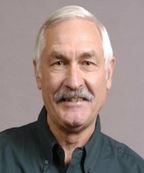



US Herd Rebuilding Started "in Earnest"
Government data laid doubts of US beef herd rebuilding to rest last month by confirming a 2.1 per cent herd increase in beef cows that calved.According to agricultural economist, Tim Petry, USDA figures have "officially documented" rebuilding and he now looks to see if any more will occur.
The North Dakota State University extension agent write that moisture conditions will affect prognosis longer term but the number of beef cows that calved at 29,693,100 head was up almost 2.1 percent from the 29,085,400 head on Jan. 1, 2014.

Mr Petry writes that, as expected, several top beef cow states in the Southern Plains that were forced to liquidate beef herds due to several years of drought, expanded cow numbers with the improving pasture and range conditions in the last year or so.
Texas, Oklahoma, Missouri, Kansas, and Colorado accounted for 534,000 of the total 607,700 head increase in U.S. beef cows. Texas, the top beef cow state in the U.S. with 4.18 million cows, saw an increase of 270,000 head. Second place Oklahoma at 1.9 million cows recorded a 105,000 head increase. From 2009 to 2014, the beef cow herd in Texas declined from 5.17 million head to 3.91 million.
Those same 5 states combined for a 165,000 head increase in beef cow replacement heifers out of the total 226,100 increase in the U.S. Beef replacements increased 80,000 head in Oklahoma followed by 50,000 head in Texas.
*
"In spite of record drought in parts of California in 2014, beef cow numbers were unchanged at 600,000 head and milk cow numbers also stayed the same at 1.78 million head"
Interestingly, in spite of record drought in parts of California in 2014, beef cow numbers were unchanged at 600,000 head and milk cow numbers also stayed the same at 1.78 million head. Beef replacements even increased 10,000 head to 120,000 and dairy replacements were unchanged at 750,000.
NASS also revised upward the number of beef replacement heifers on July 1, 2014. The July cattle report showed 4.1 million beef replacements, but that was revised to 4.3 million. So instead of being down about 2.4 per cent from the 4.2 million in July 2012, heifers were up about 2.4 per cent. The 2013 July CATTLE report was not issued due to sequestration, so comparisons with 2013 were not possible.
The 2014 calf crop at 33.9 million head was up slightly from the 33.73 million in 2013. A combination of 1.8 per cent more beef and milk cows, and 4.3 per cent more beef and dairy replacement heifers expected to calve should lead to a larger calf crop again in 2015.
The total number of calves and feeder cattle outside of feedlots at 25.2 million head was up about 0.5 per cent from the 25.1 million last year. Those cattle that were grazing small grain pastures at 1.93 million were up 320,000 head from 2014.
The number of beef replacement heifers at 5,777.4 thousand head increased over 4 per cent from 2014. Furthermore, the number of beef replacement heifers expected to calve in 2015 at 3,546 thousand head was up over 7 per cent from the 3,305 thousand in 2014.


